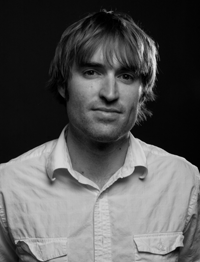|
There is only 1 blog entry from October 2011
As some of you already know, or have possibly noticed popping up on Facebook over the months, I have finally taken on the arduous task of digitizing and restoring all of my grandparent's (Momma and Poppa) old slides. In truth I actually started this project a few years ago, but was not satisfied with the quality of output that I getting and ultimately shelved the idea. A dear friend of mine, Mark Holzbach (http://www.austinforum.org/speakers/holzbach.html), was kind enough to provide me with his Nikon Super Coolscan 5000 and SF-210 Slide Feeder finally making the process both bearable and of exceptional quality. I am very pleased with the final result.
The complete collection is a little more than 6.50 GB. The file prefixes were consistent with how my grandfather (Poppa) had the boxes originally labeled and the slides were all scanned in the order that they appeared in the original carousels. There was no post-editing done to the scans (aside from the built-in Nikon/VueScan filtering) and so some are upside down, inverted, etc.
About the Slide Set
In total, there were 1,869 slides that were part of the collection. The date range of these slides appears to be from about 1973 - 1988. The locations are vast and span the North Atlantic, Canada, parts of New York and New Jersey, Eastern and Western Europe, Scandinavia, Russia, and Northern Africa (namely Egypt and Morocco). I would say that most of them take place on various cruises and other water transports, though certainly not exclusively. It's also worth noting that Poppa was very interested in shooting photos of locations and scenery as opposed to people. As it happens, he was actually very good at composition (in my opinion), but the downside is that probably less than 15% of the photos are actually of people. ...or at least people that are recognized by my family.
Digitization and Restoration
 Poppa on a boat (7/26/1975) BEFORE infrared processing and and chrome color correction Poppa on a boat (7/26/1975) BEFORE infrared processing and and chrome color correction Poppa on a boat (7/26/1975) AFTER infrared processing and and chrome color correction Poppa on a boat (7/26/1975) AFTER infrared processing and and chrome color correction
The scanner also utilizes a technology known as digital ICE (which incidentally was invented by a friend of Marks). Essentially after each slide was scanned, it would be rescanned using an infrared light. Unlike traditional white light used for scanning, infrared is capable of detecting depth. This is used to automatically detect dust and similar particulates as well as scratches on the physical film. Once the process finished, a proprietary software program I purchased (called VueScan) compared the infrared layer of data to the color layer and automatically eliminated the granular imperfections. The final step was to apply industry standard color corrections to the various types of slide film (Kodachrome, Ektochrome, etc.).
 London Wellington Arch (4/17/76) BEFORE color correcting London Wellington Arch (4/17/76) BEFORE color correcting London Wellington Arch (4/17/76) AFTER color correcting London Wellington Arch (4/17/76) AFTER color correcting
I should also note that I did not use any sort of cropping on the slides. The reason for this is that I occasionally find the algorithms to detect the edges of slides not to be very good. I wanted to preserve the entirety of the slides and so you'll note that almost all of them have the slide frame scanned around them. If you zoom in and look very closely, you'll even see the frayed edges of the film against the slide frames. In the few occasional instances where no slide frame is visible, these were slides that simply had no lip.
Also, if you are interested in printing any of these photos, just open the photo in a graphic editor of your choosing and crop as desired. The quality is FAR great enough to produce very nice prints. Even 16x20 prints of these slides should print without any pixilation.
Storing
 Some of Poppa's original notes Some of Poppa's original notes
Additional Photos
 One of the air-tight acrylic slide boxes One of the air-tight acrylic slide boxes
|
|

